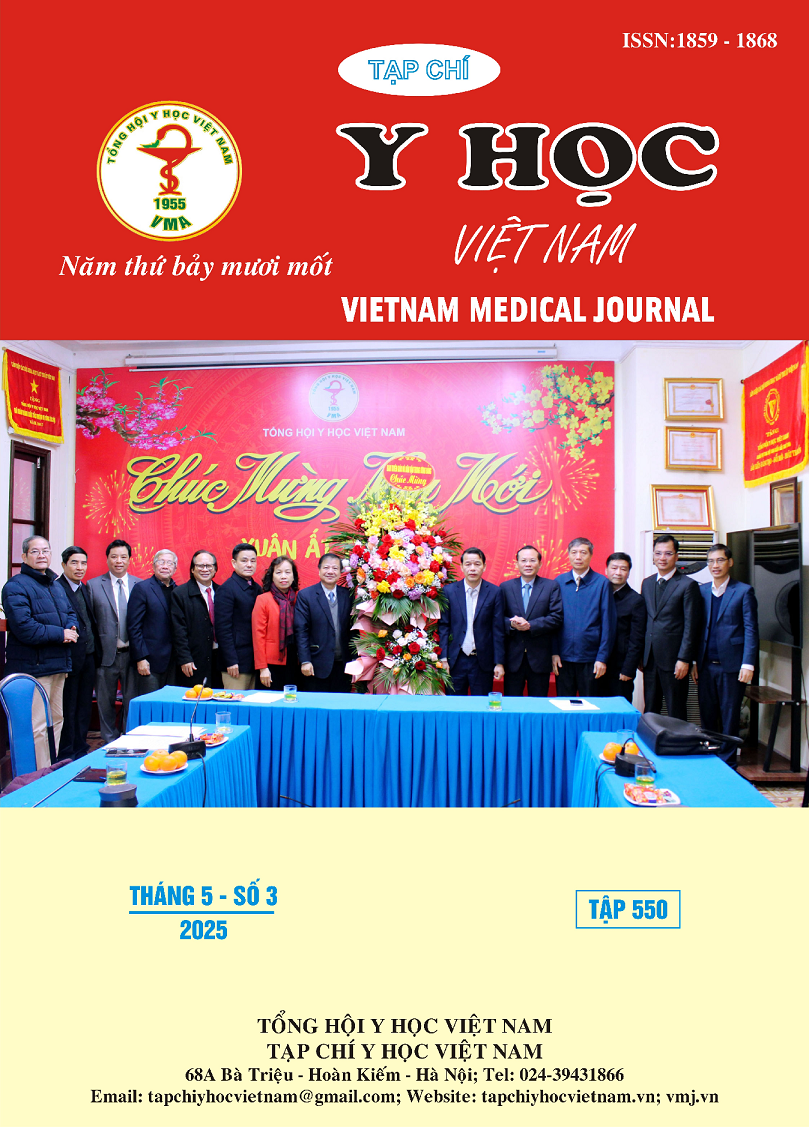CLINICAL AND PARACLINICAL CHARACTERISTICS OF CHILDREN WITH HYPERTROPHIC PYLORIC STENOSIS TREATED AT THE NATIONAL CHILDREN'S
Main Article Content
Abstract
This study aims to describe the clinical and paraclinical characteristics of pediatric patients diagnosed with hypertrophic pyloric stenosis (HPS) at the National Children’s Hospital between 2018 and 2023 to support paediatricians and surgeons in improving diagnostic accuracy and selecting appropriate treatment strategies. A retrospective analysis was conducted on 46 patients diagnosed with HPS. The findings indicate that the condition predominantly affects male infants (78.3%) and typically presents between the ages of 3 to 6 weeks (82.6%), with a mean age of onset at 26.57 ± 9.91 days. Most patients were diagnosed between 3 and 8 weeks of age (71.8%), with the average time to diagnosis being 42.38 ± 20.73 days. Clinically, all patients (100%) exhibited non-bilious, projectile vomiting of milk or undigested milk, often with a characteristic temporal delay after feeding. On physical examination, a palpable pyloric mass was detected in approximately 52.2% of cases. Plain abdominal radiography frequently revealed gastric dilation with a prominent gastric air bubble (82.6%). Ultrasonographic findings demonstrated that the majority of cases (93.4%) presented with a pyloric canal length of ≥ 16.0 mm and a muscle thickness of ≥ 4.0 mm. Conclusion: Infants presenting with non-bilious vomiting following feeding and, when present, a palpable pyloric mass should be evaluated for hypertrophic pyloric stenosis. In cases with atypical presentations, abdominal radiography and ultrasonography play critical roles in confirming the diagnosis.
Article Details
Keywords
hypertrophic pyloric stenosis, clinical features, pediatric surgery
References
2. Kim HJ. Utility of Pyloric Length Measurement for Detecting Severe Metabolic Alkalosis in Infants with Hypertrophic Pyloric Stenosis. Pediatric Gastroenterology, Hepatology & Nutrition. 2024; 27(2): 88-94. doi:10.5223/pghn.2024. 27.2.88
3. van den Bunder FA, Derikx JP, Kiblawi R, van Rijn RR, Dingemann J. Diagnostic accuracy of palpation and ultrasonography for diagnosing infantile hypertrophic pyloric stenosis: a systematic review and meta-analysis. British Journal of Radiology. 2022;95(1139):20211251. doi:10.1259/bjr.20211251
4. Oetzmann von Sochaczewski C, Muensterer OJ. The incidence of infantile hypertrophic pyloric stenosis nearly halved from 2005 to 2017: analysis of German administrative data. Pediatr Surg Int. 2021;37(5):579-585. doi:10.1007/ s00383-020-04810-0
5. Leong MM, Chen SCC, Hsieh CS, et al. Epidemiological Features of Infantile Hypertrophic Pyloric Stenosis in Taiwanese Children: A Nation-Wide Analysis of Cases during 1997–2007. PLoS One. 2011;6(5): e19404. doi:10.1371/journal. pone.0019404
6. Shaligram R, Malwade S, Garud BP, Mane S. Infantile Hypertrophic Pyloric Stenosis Without Metabolic Alkalosis: A Report of Two Cases. Cureus. 2024;16(9): e68548. doi:10.7759/cureus. 68548


